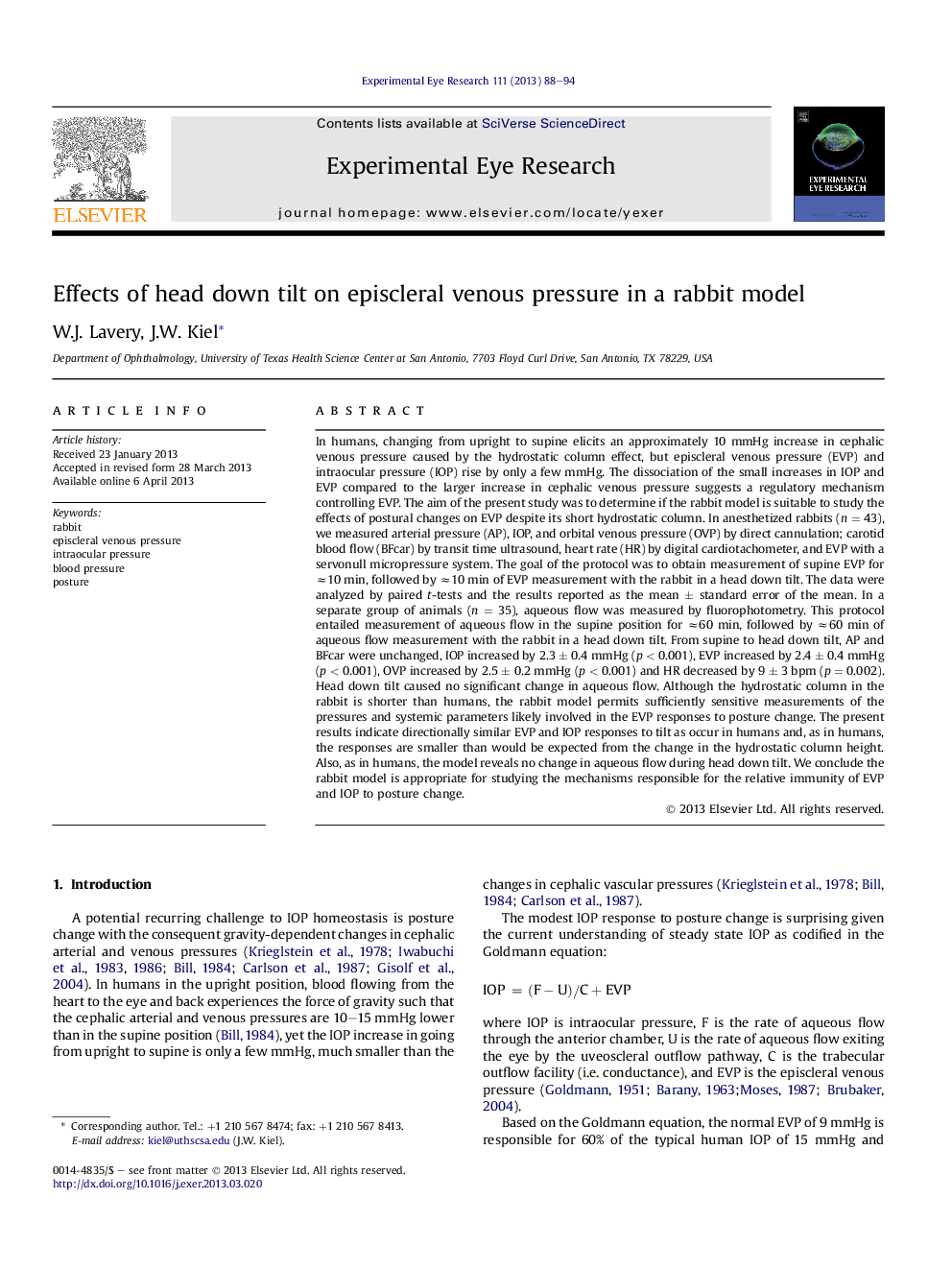| کد مقاله | کد نشریه | سال انتشار | مقاله انگلیسی | نسخه تمام متن |
|---|---|---|---|---|
| 6197300 | 1602611 | 2013 | 7 صفحه PDF | دانلود رایگان |
- EVP and other relevant ocular and systemic parameters can be measured in the rabbit during simulated posture change.
- EVP and IOP responses to posture change are qualitatively similar to those reported in humans.
- As in humans, EVP and IOP responses to posture change do not seem to be passive.
In humans, changing from upright to supine elicits an approximately 10 mmHg increase in cephalic venous pressure caused by the hydrostatic column effect, but episcleral venous pressure (EVP) and intraocular pressure (IOP) rise by only a few mmHg. The dissociation of the small increases in IOP and EVP compared to the larger increase in cephalic venous pressure suggests a regulatory mechanism controlling EVP. The aim of the present study was to determine if the rabbit model is suitable to study the effects of postural changes on EVP despite its short hydrostatic column. In anesthetized rabbits (n = 43), we measured arterial pressure (AP), IOP, and orbital venous pressure (OVP) by direct cannulation; carotid blood flow (BFcar) by transit time ultrasound, heart rate (HR) by digital cardiotachometer, and EVP with a servonull micropressure system. The goal of the protocol was to obtain measurement of supine EVP for â10 min, followed by â10 min of EVP measurement with the rabbit in a head down tilt. The data were analyzed by paired t-tests and the results reported as the mean ± standard error of the mean. In a separate group of animals (n = 35), aqueous flow was measured by fluorophotometry. This protocol entailed measurement of aqueous flow in the supine position for â60 min, followed by â60 min of aqueous flow measurement with the rabbit in a head down tilt. From supine to head down tilt, AP and BFcar were unchanged, IOP increased by 2.3 ± 0.4 mmHg (p < 0.001), EVP increased by 2.4 ± 0.4 mmHg (p < 0.001), OVP increased by 2.5 ± 0.2 mmHg (p < 0.001) and HR decreased by 9 ± 3 bpm (p = 0.002). Head down tilt caused no significant change in aqueous flow. Although the hydrostatic column in the rabbit is shorter than humans, the rabbit model permits sufficiently sensitive measurements of the pressures and systemic parameters likely involved in the EVP responses to posture change. The present results indicate directionally similar EVP and IOP responses to tilt as occur in humans and, as in humans, the responses are smaller than would be expected from the change in the hydrostatic column height. Also, as in humans, the model reveals no change in aqueous flow during head down tilt. We conclude the rabbit model is appropriate for studying the mechanisms responsible for the relative immunity of EVP and IOP to posture change.
Journal: Experimental Eye Research - Volume 111, June 2013, Pages 88-94
